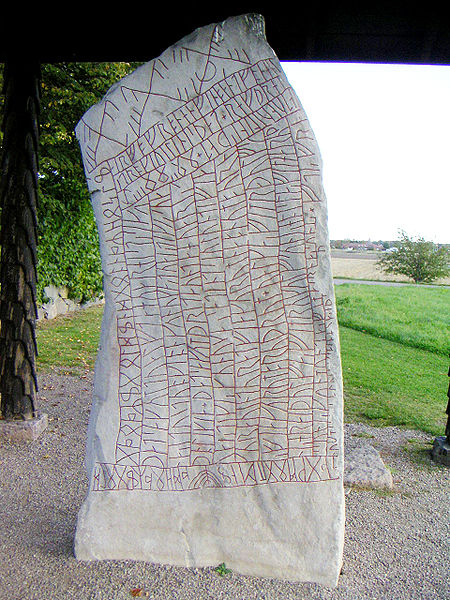Early Germanic culture was the culture of the early Germanic peoples. Largely derived from a synthesis of Proto-Indo-European and indigenous Northern European elements, the Germanic culture started to exist in the Jastorf culture that developed out of the Nordic Bronze Age. It came under significant external influence during the Migration Period, particularly from ancient Rome.
Royal mounds at Gamla Uppsala in Sweden, an important centre of early Germanic culture
Excerpt from Njáls saga in the Möðruvallabók (AM 132 folio 13r) c. 1350
An inscription using cipher runes, the Elder Futhark, and the Younger Futhark, on the 9th-century Rök runestone in Sweden
The gilded side of the Trundholm Sun Chariot, Nordic Bronze Age
The Vandals were a Germanic people who first inhabited what is now southern Poland. They established Vandal kingdoms on the Iberian Peninsula, Mediterranean islands, and North Africa in the fifth century.
Vandalic gold foil jewellery from the 3rd or 4th century
A 16th century perception of the Vandals, illustrated in the manuscript "Théâtre de tous les peuples et nations de la terre avec leurs habits et ornemens divers, tant anciens que modernes, diligemment depeints au naturel" which means "Theater of all the peoples and nations of the earth with their various clothes and ornaments, both ancient and modern, diligently depicted in nature". Painted by Lucas de Heere in the second half of the 16th century and preserved in the
Neck ring with plug clasp from the Vandalic Treasure of Osztrópataka displayed at the Kunsthistorisches Museum in Vienna, Austria.
Reconstruction of an Iron Age warrior's garments representing a Vandalic man, with his hair in a "Suebian knot" (160 AD), Archaeological Museum of Kraków, Poland.








